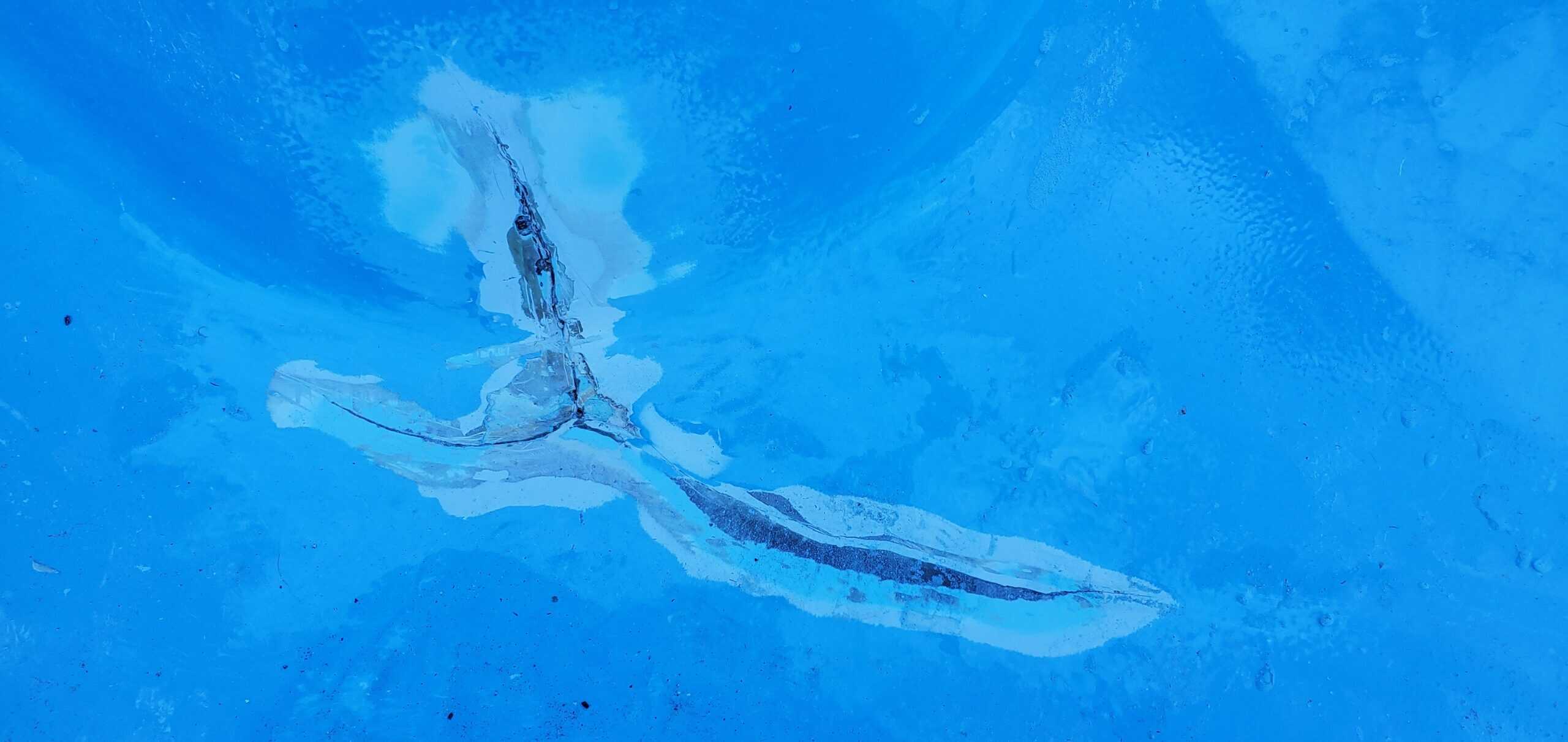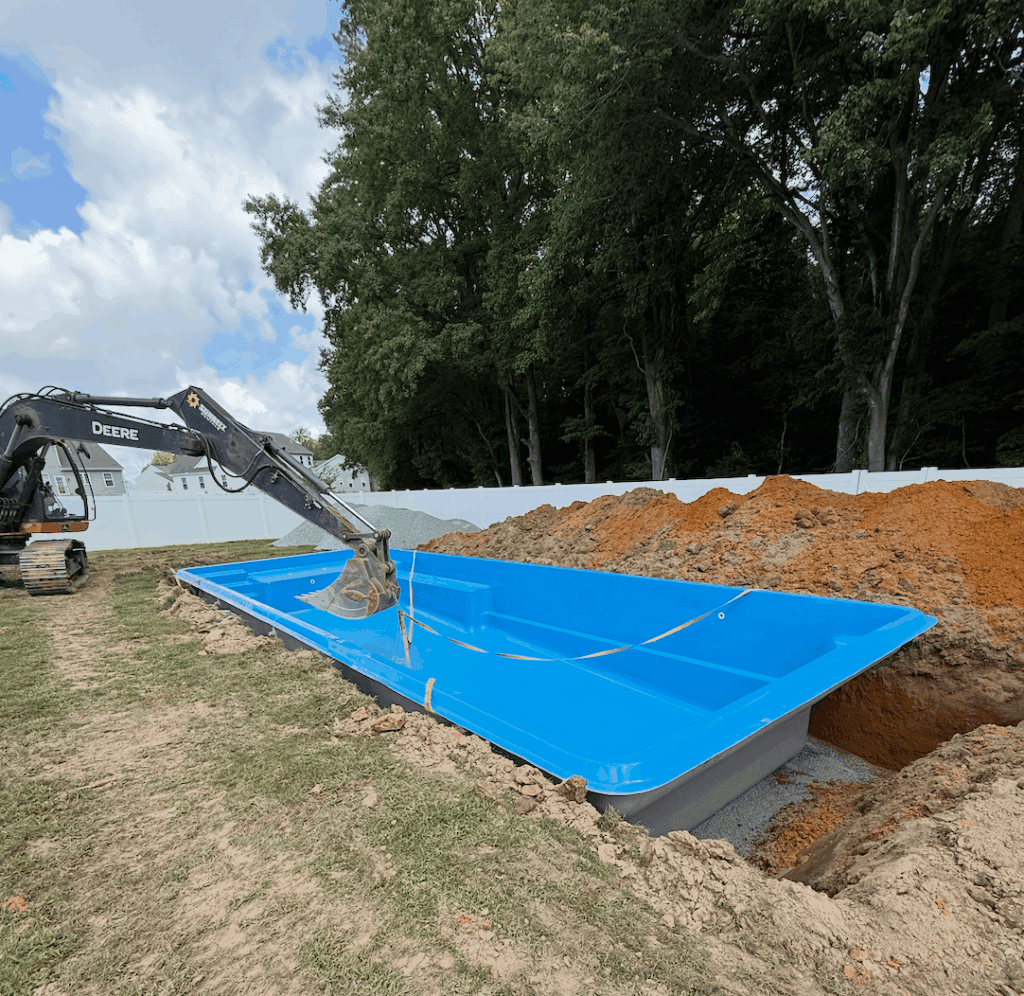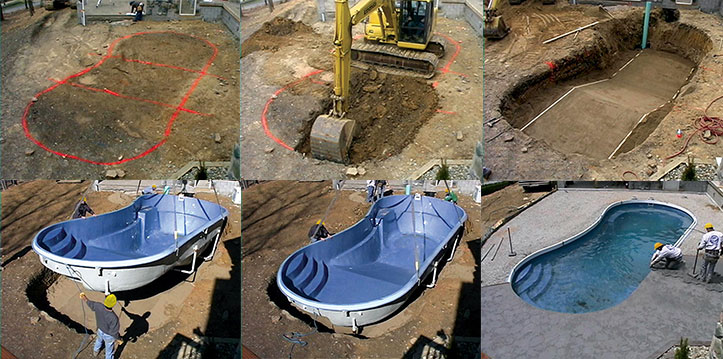
Considering a fiberglass pool but worried about cracks? It’s one of the most common concerns we hear from families planning their backyard oasis.
The truth about whether fiberglass pools crack might surprise you, and understanding the facts can save you unnecessary worry, time, and money while helping you make the right choice for your family’s summer memories.
Contents
Understanding Why Fiberglass Pools May Crack
Fiberglass pools rarely experience significant structural cracks when properly installed. Most “cracks” homeowners notice are, in fact, superficial gelcoat issues rather than structural failures.
The flexible nature of fiberglass allows these pools to withstand ground movement and seasonal changes better than their concrete counterparts. When cracks do occur, they typically result from installation errors such as improper leveling, inadequate support, or substandard materials.
So, do fiberglass pools crack? The short answer is that while the gelcoat surface can develop cosmetic imperfections, true structural cracks are uncommon in quality fiberglass pools with proper installation.
Gelcoat vs. Shell Integrity
The gelcoat is simply the thin, colored finish layer that gives your pool its smooth, attractive appearance. This surface layer can develop spider cracks or crazing without affecting the structural integrity of your pool.
The actual fiberglass shell beneath the gelcoat provides the real strength of your pool. This multi-layered structure is engineered to flex slightly with ground movement while maintaining its shape.
Site Preparation Factors
Uneven ground beneath your pool creates pressure points that can stress the fiberglass shell. These concentrated areas of pressure may eventually lead to gelcoat cracks.
Improper backfilling with materials like clay instead of sand can cause uneven pressure against the pool walls. As soil settles or shifts with moisture changes, this uneven pressure becomes problematic.
Common Myths About Fiberglass Pool Cracks
Myth #1: Fiberglass Material Is Weak
Fiberglass is one of the strongest materials used in pool construction. Its ability to flex slightly without breaking gives it an advantage over rigid materials like concrete.
Modern manufacturing techniques have dramatically improved the strength and durability of fiberglass pools. Today’s pools feature multiple reinforced layers that provide exceptional structural integrity.
Myth #2: Any Surface Crack Is a Structural Failure
Small spider cracks in the gelcoat are cosmetic issues, not structural problems. These hairline surface imperfections typically don’t affect the pool’s water-holding ability.
Distinguishing between cosmetic and structural issues is important for peace of mind. True structural cracks are rare in properly installed fiberglass pools and would be much larger and more obvious than typical gelcoat crazing.
Myth #3: Cracks Are Impossible to Repair
Most gelcoat issues can be easily repaired with specialized kits designed for fiberglass surfaces. These repairs can restore both the appearance and protective function of the gelcoat.
Even in the rare case of a structural issue, professional repair techniques exist that can restore the pool’s integrity. Modern repair methods have made virtually any fiberglass pool damage fixable.
Myth #4: Fiberglass Pools Will “Pop” Out of the Ground
Properly installed fiberglass pools with adequate drainage systems don’t pop out of the ground. This myth stems from rare cases where pools were completely drained without proper guidance or oversight.
The hydrostatic pressure that could potentially lift an empty pool is easily managed with proper installation techniques and drainage systems. Keeping some water in your pool at all times also prevents this issue.
How to Prevent Fiberglass Pool Cracks
Step 1: Ensure Correct Installation Procedures
Working with experienced professionals or following manufacturer guidelines precisely is crucial during installation. The initial placement and leveling of your fiberglass pool shell sets the foundation for long-term performance.
Proper compaction of the base material creates even support that prevents stress points. This attention to detail during installation is your best insurance against future problems.
Key factors in proper installation include:
- Level-based preparation: Ensures even support across the entire pool bottom
- Proper plumbing connections: Prevents leaks that could undermine support
- Professional guidance: Reduces the risk of installation errors

Step 2: Use Quality Backfill Materials
Clean sand or crushed stone provides consistent support around the pool walls. These materials compact evenly and allow for proper drainage around the pool structure.
Avoid using native soil, especially clay, for backfilling. These materials can retain water, expand and contract with temperature changes, and create uneven pressure.
Step 3: Monitor Water Levels
Never completely drain your fiberglass pool without professional guidance. The water in your pool provides optimal counterbalance to the pressure of the ground and groundwater outside.
Maintaining proper water chemistry also protects the gelcoat from premature deterioration. Balanced water prevents etching and staining that might be mistaken for cracks.
Repairing Fiberglass Pool Cracks
Minor Gelcoat Fixes
Small spider cracks can often be repaired with DIY gelcoat repair kits available from pool supply stores. These kits include color-matched gelcoat material and clear instructions for application.
The repair process typically involves cleaning the affected area, applying the repair material, and allowing proper curing time. Following the manufacturer’s instructions carefully ensures the best results.
Signs that indicate a DIY repair is appropriate:
- Hairline cracks that don’t penetrate beyond the gelcoat
- Small, isolated areas of crazing
- No water leakage is associated with the cracks
When to Contact a Professional to Repair Fiberglass Cracks
Deep cracks that appear to penetrate beyond the gelcoat layer warrant professional inspection. These could indicate more significant issues that require specialized repair techniques.
Signs of structural movement, such as bulging walls or uneven edges, should prompt immediate professional evaluation. Early intervention can prevent minor issues from developing into major problems.
A Note on Long-Term Peace of Mind
Fiberglass pools are designed to last decades with minimal maintenance. Their one-piece construction eliminates many of the common failure points found in other pool types.
The question “Do fiberglass pools crack?” reflects a common concern, but with proper installation and maintenance, serious structural issues are rare. Most fiberglass pool owners enjoy years of trouble-free swimming with only routine maintenance.

Choosing a quality fiberglass shell from a reputable manufacturer like Pool Brokers USA provides additional assurance against potential issues. Our pools are engineered with multiple reinforced layers and premium gelcoats that resist cracking and maintain their beauty for years.
When you’re ready to bring a durable, low-maintenance fiberglass pool to your backyard, Request a Quote to learn about options that fit your family’s needs and budget.
